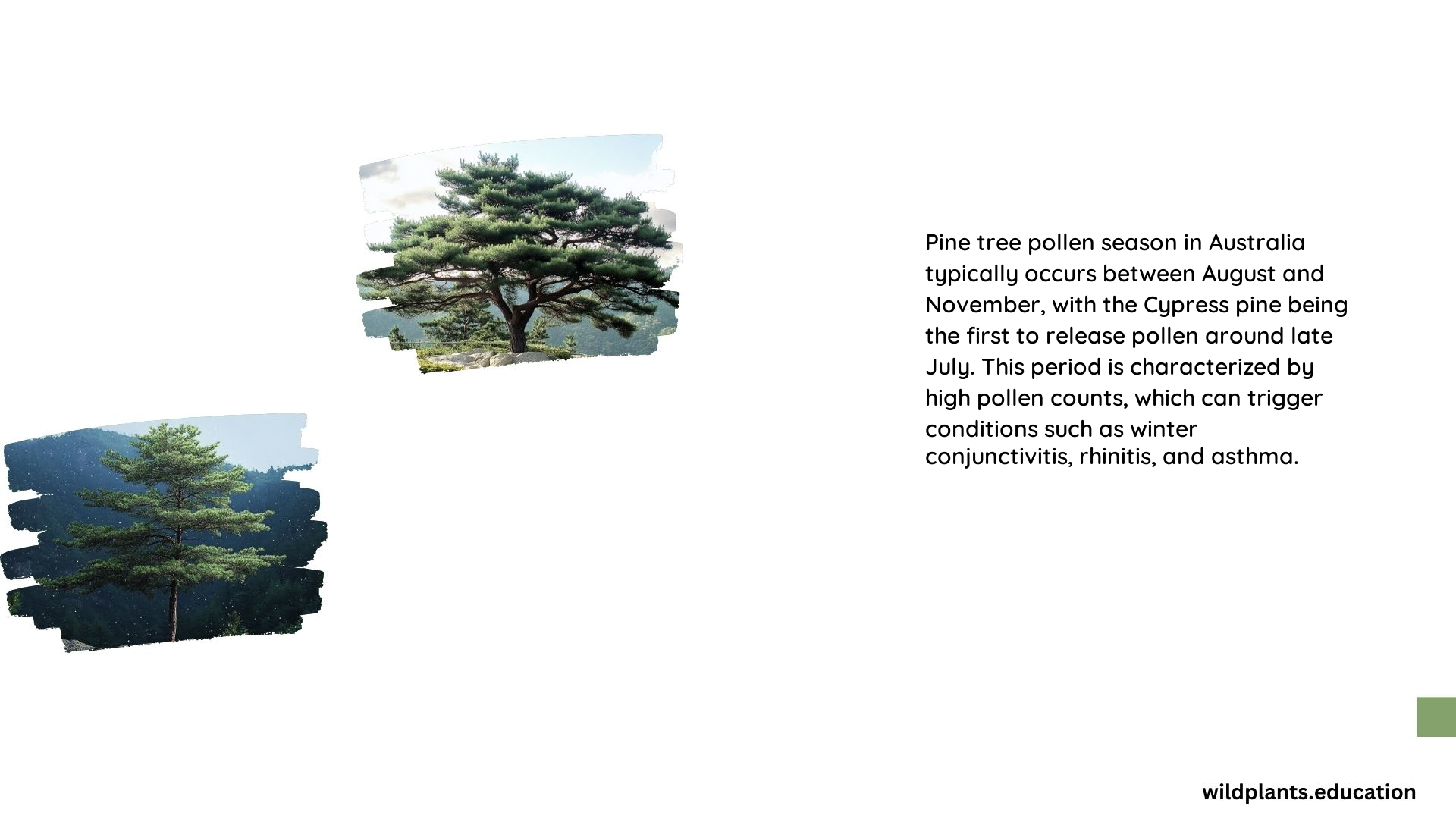The pine tree pollen season in Australia is a significant period for individuals with allergies and those interested in the ecological impact of pine trees. This comprehensive guide covers the peak pollen season, regional variations, climate influences, pollen levels, and additional details for wild plant enthusiasts.
When is the Peak Pine Tree Pollen Season in Australia?

The peak pollen season for pine trees in Australia typically occurs during late spring and early summer. This period is characterized by high pollen counts, which can exacerbate allergies and affect air quality.
What are the Specific Dates and Regional Variations for Pine Tree Pollen Season in Australia?

The specific dates for the pine tree pollen season in Australia vary depending on the region:
| Region | Peak Pollen Season |
|---|---|
| Southern Australia | September to November, with the highest pollen counts usually seen in late November. |
| Northern Australia | April to June, with the peak period usually seen in late April and early May. |
How Does Climate Influence the Pine Tree Pollen Season in Australia?
The Australian climate significantly influences the timing and intensity of the pine tree pollen season. Factors such as temperature, humidity, and seasonal weather patterns play a crucial role:
Temperature
Warmer temperatures can trigger the release of pollen from pine trees, leading to higher pollen counts during late spring and early summer.
Humidity
High humidity can reduce pollen dispersal, while low humidity can increase it.
Seasonal Weather Patterns
Weather patterns such as wind direction and speed can affect the distribution of pollen, with northerly winds often bringing pollen from inland regions to coastal areas.
What are the Pollen Levels and Impact During the Pine Tree Pollen Season in Australia?
During the peak pollen season, pollen levels can reach high concentrations, significantly affecting air quality and allergy sufferers:
- Pollen Counts: Pollen counts can reach up to 100 grains per cubic meter during the peak season, with some studies indicating that levels can exceed 200 grains per cubic meter in certain regions.
- Impact on Allergy Sufferers: High pollen counts can trigger severe allergic reactions, including hay fever, asthma, and atopic dermatitis in sensitized individuals.
What Additional Details Should Wild Plant Enthusiasts Know About Pine Trees in Australia?
- Types of Pine Trees: Several species of pine trees are prevalent in Australia, including the Australian pine (Casuarina equisetifolia), white cypress-pine, and others. These trees are often found in subtropical and tropical coastal areas.
- Ecological Significance: Pine trees play a crucial role in maintaining ecosystem balance, providing habitat for various species and helping to stabilize soil.
- Conservation Efforts: Conservation efforts are in place to protect and preserve pine forests in Australia, including initiatives to control the spread of invasive species and promote sustainable forestry practices.
Reference:
- First Aid Course Experts – Pollen Season and Asthma in Australia (2023) – https://firstaidcourseexperts.com.au/pollen-season-and-asthma/
- Thermo Fisher Scientific – Australian Pine Pollen (t73) – https://www.thermofisher.com/phadia/us/en/resources/allergen-encyclopedia/t73.html
- Nasonex Australia – A Pollen Primer – https://www.nasonexallergy.com.au/articles/pollen-primer.
